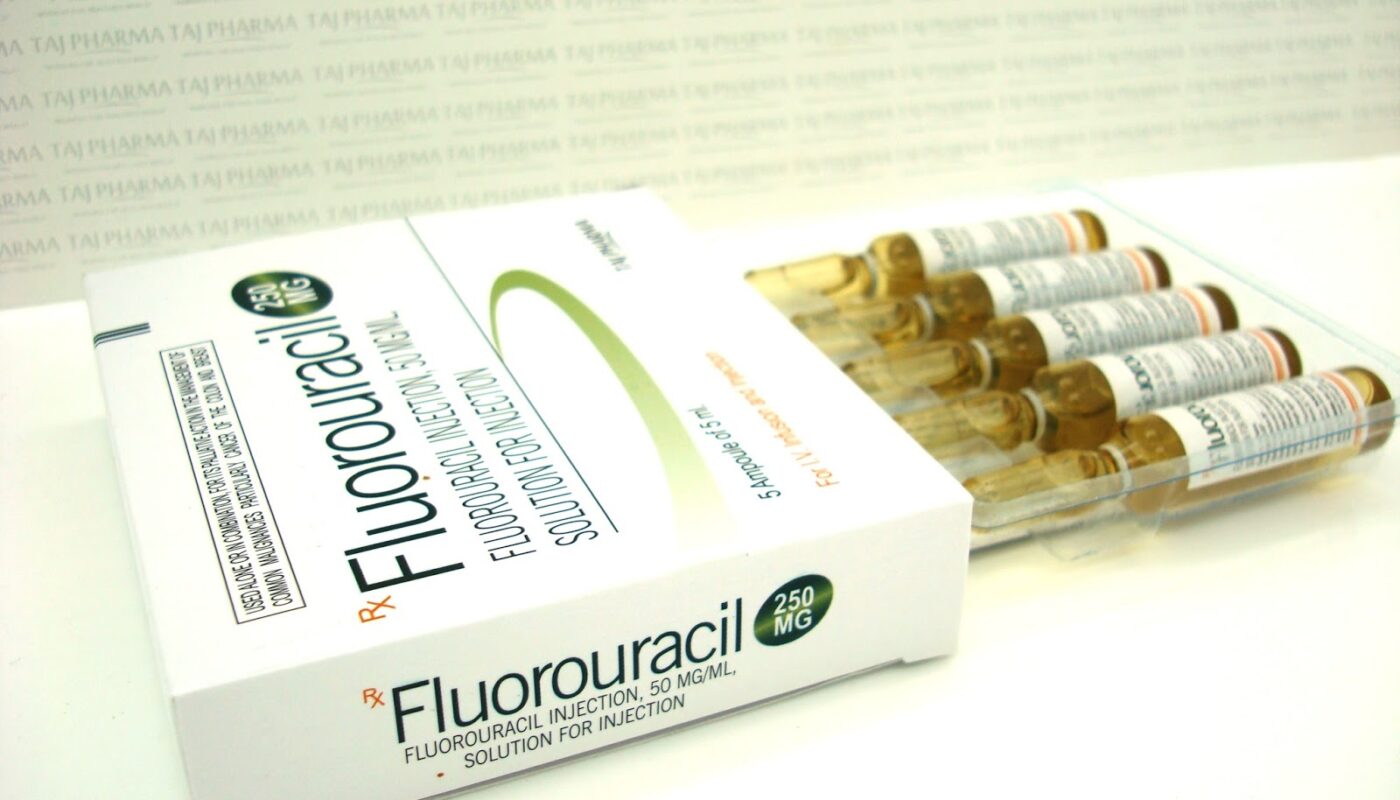Fluorouracil, commonly known as 5FU, was first synthesized in 1957 at the Cancer Chemotherapy National Service Center in the hopes of developing an anticancer drug with fewer side effects than existing therapies. Early clinical trials in the late 1950s showed that 5FU was effective at shrinking tumors in some cancer patients. Further research identified the drug’s mechanism of action and helped optimize dosing schedules to maximize its impact while minimizing toxicity. By the 1960s, 5FU was approved for clinical use and quickly became one of the most widely utilized chemotherapies.
Mechanism of Action
5FU works by inhibiting thymidylate synthase, an enzyme important for nucleic acid synthesis. Thymidylate synthase is required to convert deoxyuridine monophosphate (dUMP) to deoxythymidine monophosphate (dTMP), which is necessary for DNA replication. By blocking this enzyme, 5FU causes thymineless death, preventing cancer cells from synthesizing the DNA and RNA they need to divide and grow. 5FU can also cause DNA damage by becoming accidentally incorporated into DNA and RNA, interfering with their structure and function. These dual modes of action make 5FU a potent weapon against rapidly dividing cancer cells.
Approved Cancer Treatment Indications
Due to its broad antitumor activity, Fluorouracil (5FU) has labeling approval for the treatment of several cancer types either alone or in combination with other drugs. Among the FDA-approved uses for 5FU are:
– Colorectal cancer: As first- or second-line treatment with leucovorin for advanced or metastatic disease. Also used in an adjuvant setting after surgery for stages II-III colon cancer.
– Breast cancer: May provide additional benefit when combined with chemotherapy regimens like doxorubicin and cyclophosphamide in early stage disease.
– Gastric cancer: Approved in combination with cisplatin for inoperable, recurrent, or metastatic gastric adenocarcinoma.
– Head and neck cancers: Used as part of combined modality therapy with radiation for local or locally advanced squamous cell carcinoma.
– Anal cancer: In combination with mitomycin and radiation as definitive therapy for squamous cell carcinoma.
Dosing, Administration, and Formulations
The standard dosing schedule for 5FU is continuous intravenous infusion for 2-7 days, then a rest period of 7-10 days before the next cycle is started. This “prolonged infusion” allows for continuous exposure of tumor cells while minimizing toxicity. High-dose bolus infusion is associated with greater risk of side effects and is mainly used in combination regimens.
Fluorouracil comes in several formulations including injection and oral forms. The oral capsule contains a polymer coating that releases 5FU slowly over time in the gastrointestinal tract. This reduces variability from patient to patient compared to intravenous delivery. Capecitabine is an oral prodrug of 5FU that is converted to the active drug specifically in tumor tissue.
Side Effects and Toxicity Management
A leading side effect of 5FU treatment is oral mucositis, causing painful sores and ulcers in the mouth and throat. Other common toxicities include diarrhea, nausea/vomiting, alopecia, fatigue, and bone marrow suppression leading to increased risks of infection and bleeding. Careful monitoring and preventive care are needed, especially during the initial cycles, to manage side effects. Dose reductions or drug holidays may be required if toxicity becomes severe. Antiemetics, growth factors, and pre- and probiotics can also help support patients getting through treatment. Long-term side effects are generally mild.
Recent Advances and Future Directions
Ongoing research aims to further improve the therapeutic index of 5FU. Enhanced formulation strategies seek to better target delivery to tumors while sparing normal tissues. One example is S-1, an oral prodrug containing tegafur, gimeracil, and oteracil that maintains antitumor potency while reducing systemic exposure compared to 5FU alone. Combination treatment regimens also allow lower, less toxic doses of 5FU to be utilized effectively. Examples include FOLFIRI (5FU, leucovorin, irinotecan) and FOLFOX (5FU, leucovorin, oxaliplatin) regimens used commonly in colorectal cancer. Exploration of predictive biomarkers may one day help personalize 5FU-based therapies and maximize outcomes on an individual basis. Despite over 60 years of clinical use, 5FU remains a still pivotal drug for multiple cancer types.
Fluorouracil was one of the earliest systematically developed cancer chemotherapies. Over decades of clinical experience, 5FU has proven remarkably effective against a variety of solid tumors. Its ability to interfere with DNA replication makes it a useful member of many treatment protocols even today. With further refinement, 5FU and related compounds will likely continue playing an important role in improving cancer survival for years to come.
*Note:
1. Source: Coherent Market Insights, Public sources, Desk research
2. We have leveraged AI tools to mine information and compile it
About Author - Priya Pandey
Priya Pandey is a dynamic and passionate editor with over three years of expertise in content editing and proofreading. Holding a bachelor's degree in biotechnology, Priya has a knack for making the content engaging. Her diverse portfolio includes editing documents across different industries, including food and beverages, information and technology, healthcare, chemical and materials, etc. Priya's meticulous attention to detail and commitment to excellence make her an invaluable asset in the world of content creation and refinement. LinkedIn Profile


 by
by 


